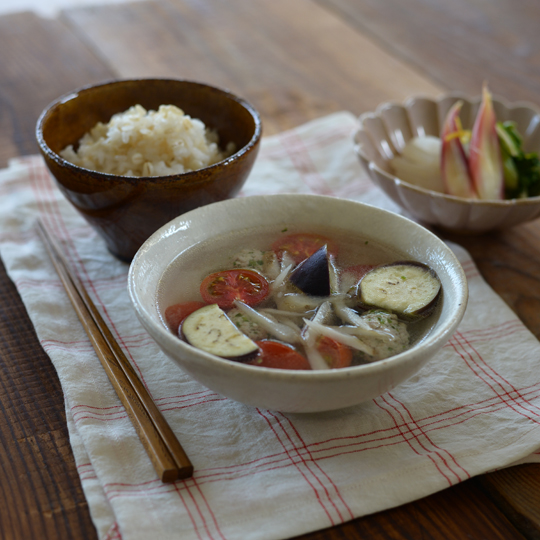当日発送について
平日(営業日)の12時までにご注文が完了したご注文で、以下の条件に該当するご注文を当日配送いたします。
◯ご注文いただいた商品の在庫がすべてある場合。
◯お支払方法がクレジットカード決済か代引きの場合。
◯定休日はではない。
※受注状況や確認事項の有無などにより、お時間をいただく場合がございます。
定休日のご案内
土日祝日、お盆、年末年始などは出荷業務をお休みいたします。
Now Loading...
平日(営業日)の12時までにご注文が完了したご注文で、以下の条件に該当するご注文を当日配送いたします。
◯ご注文いただいた商品の在庫がすべてある場合。
◯お支払方法がクレジットカード決済か代引きの場合。
◯定休日はではない。
※受注状況や確認事項の有無などにより、お時間をいただく場合がございます。
土日祝日、お盆、年末年始などは出荷業務をお休みいたします。
BROTH / ブロス
毎日使う名脇役なボウル
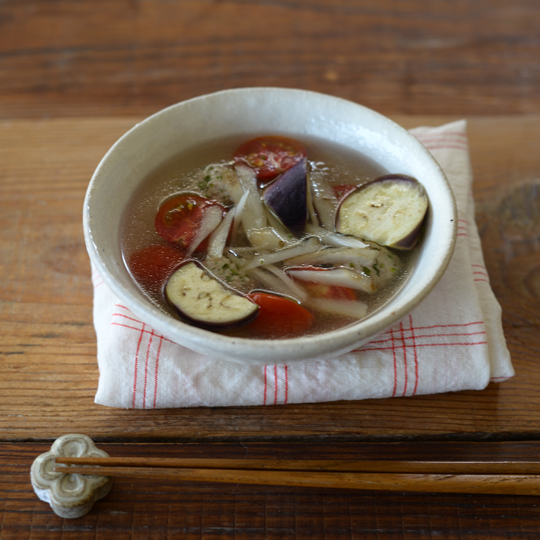
何の料理をつくろうか、と悩むと、つい具だくさんスープを作ってしまいます。
家にある肉や野菜、ときどき豆なんかも入れて、じっくりコトコト煮込めば出来上がり。
あまり難しいことを考えなくても、いろいろな食材を一度に口にできるし、温かい汁物があるだけでなんだかほっとして落ち着きます。
ポトフ風のシンプルな味にしたり、トマトを入れてミネストローネっぽくしてみたり。味噌汁や辛くしてチゲ風にすることも。
スープ、煮物、お茶漬け、グラノーラ・・・
そんなスープを入れるのに使いやすいなと思っている器のサイズがあります。
それは口径が15cmくらいで、少し高さが低くて、口が広めのバランスのボウル。
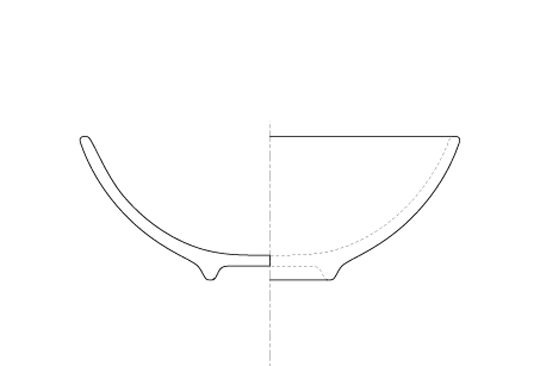
鍋をしたときの取り分けるとんすいや、一人ひとりの煮物鉢。お茶漬けや卵かけごはんといった白ごはんに何か足す時にも活躍します。
あとはグラノーラにもちょうどいいサイズで、少し浅めで丸みを帯びた形がスプーンですくい易いです。
新しい企画を考えていた時に、ふとそのことを思い出し、形や素材を試行錯誤してできあがったのが今回の新作のブロスシリーズです。
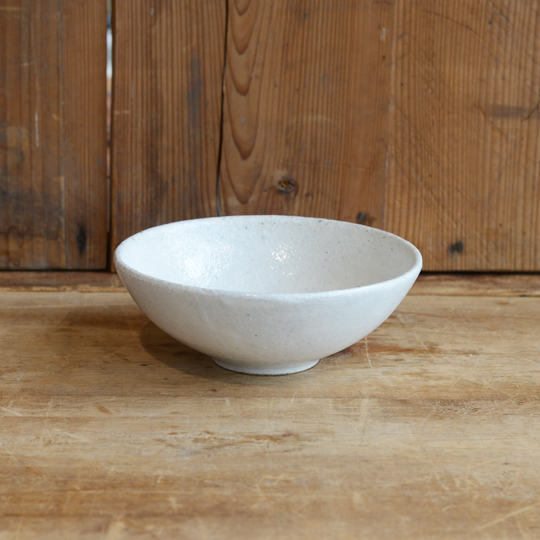
【企画のこだわり】スープやシリアルは5寸、麺や丼は6寸
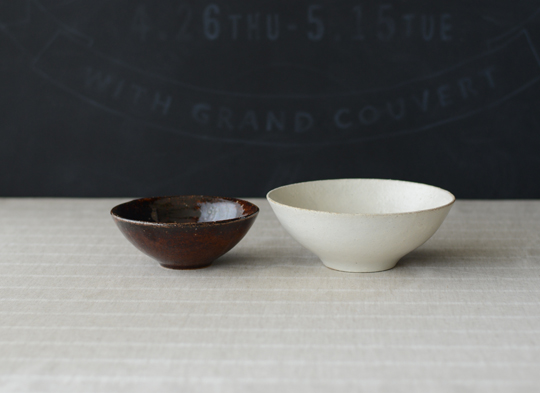
まずはスープや鉢として使いやすい5寸サイズのボウルから企画。
そしてサイズのバリエーションをいろいろと検討した結果、6寸サイズもつくることに。
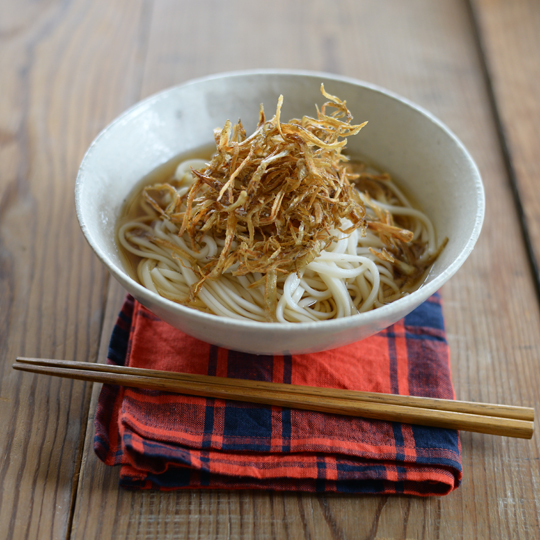
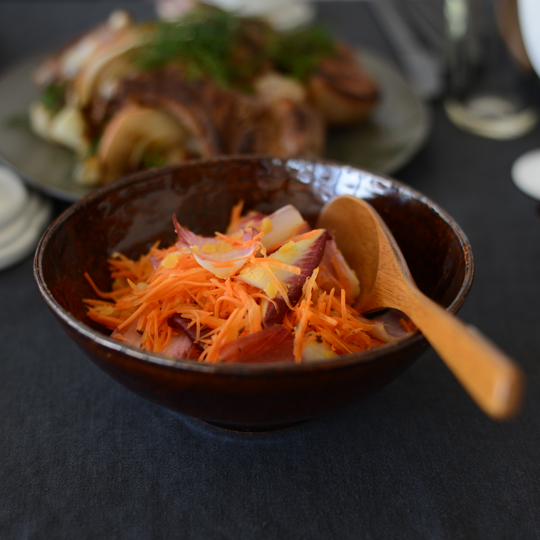
6寸ボウルも口が広めで深さが浅めな形。
意外とこういうサイズとバランスの器がないんです。
広めな口径で、うどんや冷麺、ビビンバ、丼ものなどにちょうど良いですよ。
他にもサラダなどの盛り鉢にもおすすめ。
5寸、6寸どちらも箸だけでなくてスプーンも使って食べることを想定して、すくいやすいように中の丸みに気を使っています。
【企画のこだわり】料理を優しく包みこむ、温かい白と飴
ブロスはシンプルでクセのない、使いやすい形。その分色や素材で味わい深くしたいと考えました。
そして色々な釉薬でサンプルをした結果、最終的に「粉引」と「飴」の2色に決定しました。
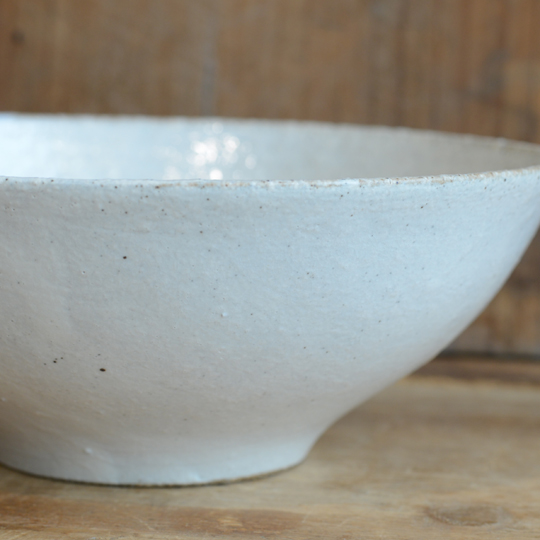
一言で粉引、といっても土や粉引の種類、焼き方によって様々な表情のものがあります。ブロスはその中でもやわらかさと温かみ、優しさがある白い色です。
土自体に含まれている鉄分と上にかけた粉引が風合いを生み出し、そして釉薬を薄めにかけることで、つるつるしすぎない少しざらっとした質感に仕上げています。
素朴で温かみのある白い色は、和にも洋にも、お家でのごはんを優しく包みこみます。
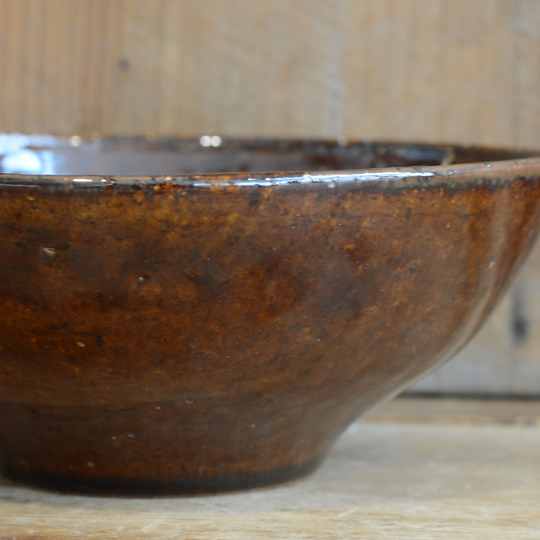
飴は窯での焼かれ方や土の成分、釉のかかり具合などで変化が大きい色。一つひとつが違った表情をみせてくれます。
釉薬だけで見ると和風なのですが、ブロスの形と合わせることで和洋どちらにも合わせやすいバランスに仕上がっています。
粉引も飴もスタジオエムらしい、素朴で温かみのあるうつわになりました。
目立つデザインではありませんが、毎日の食事で使いやすい、生活に寄り添う器です。
